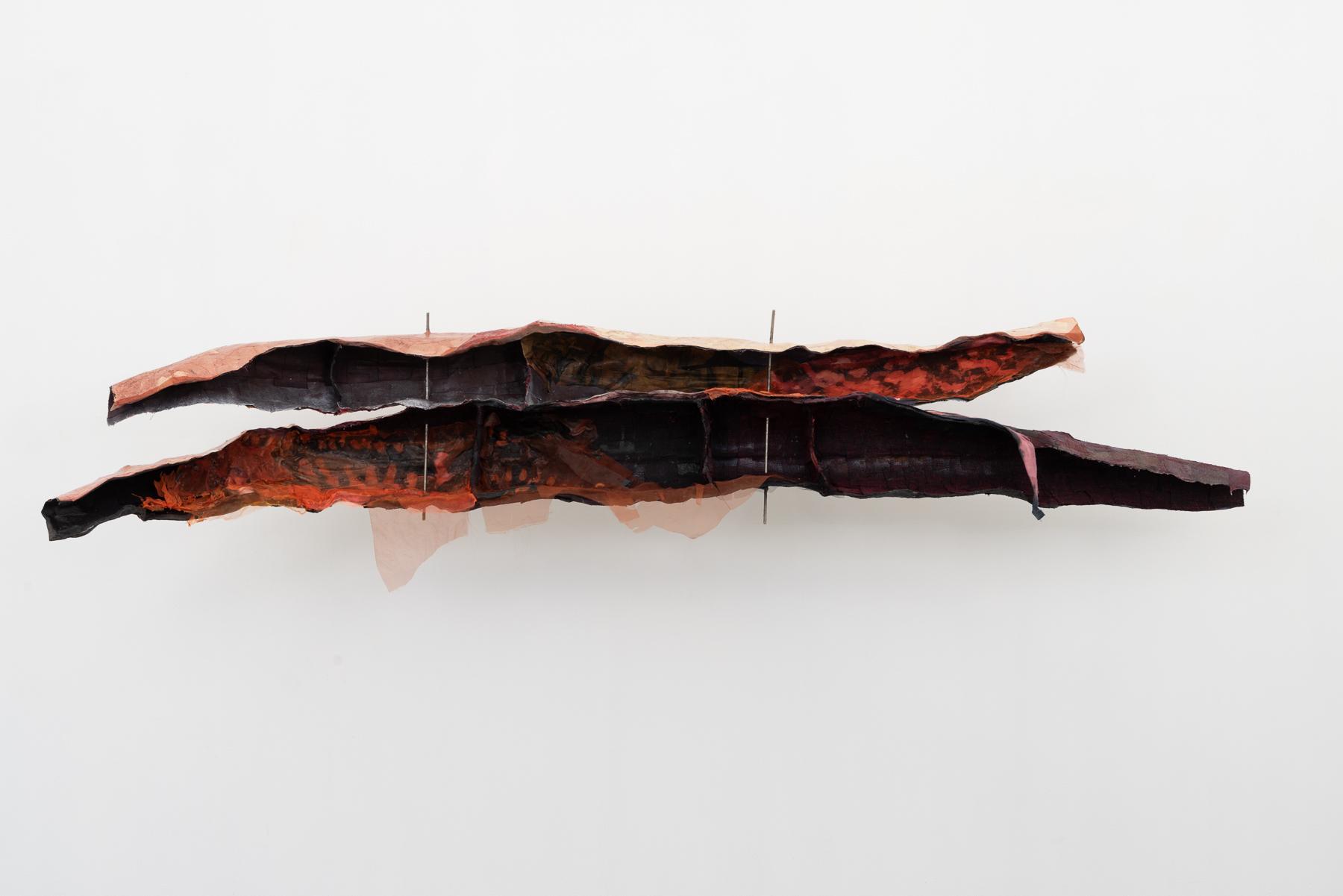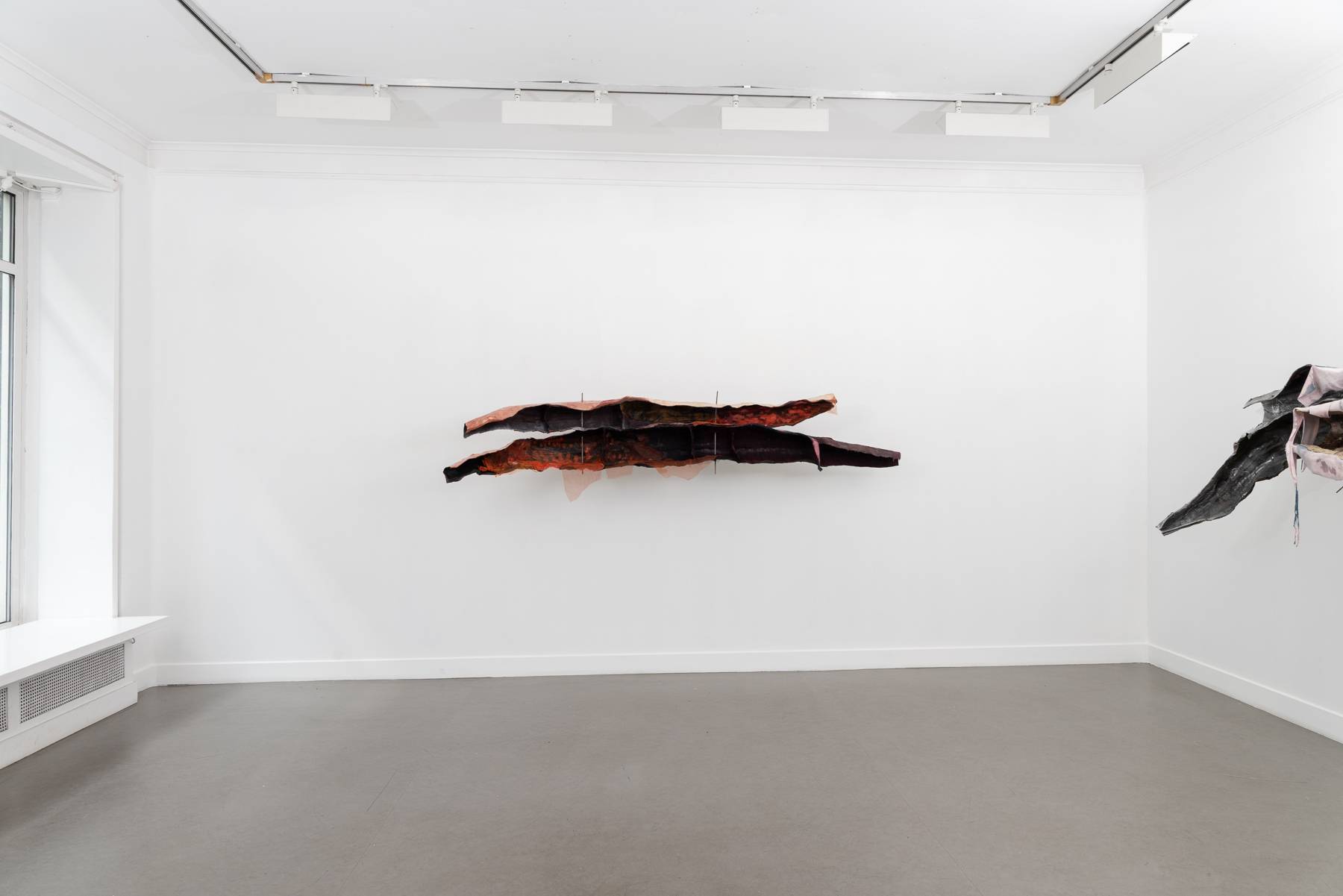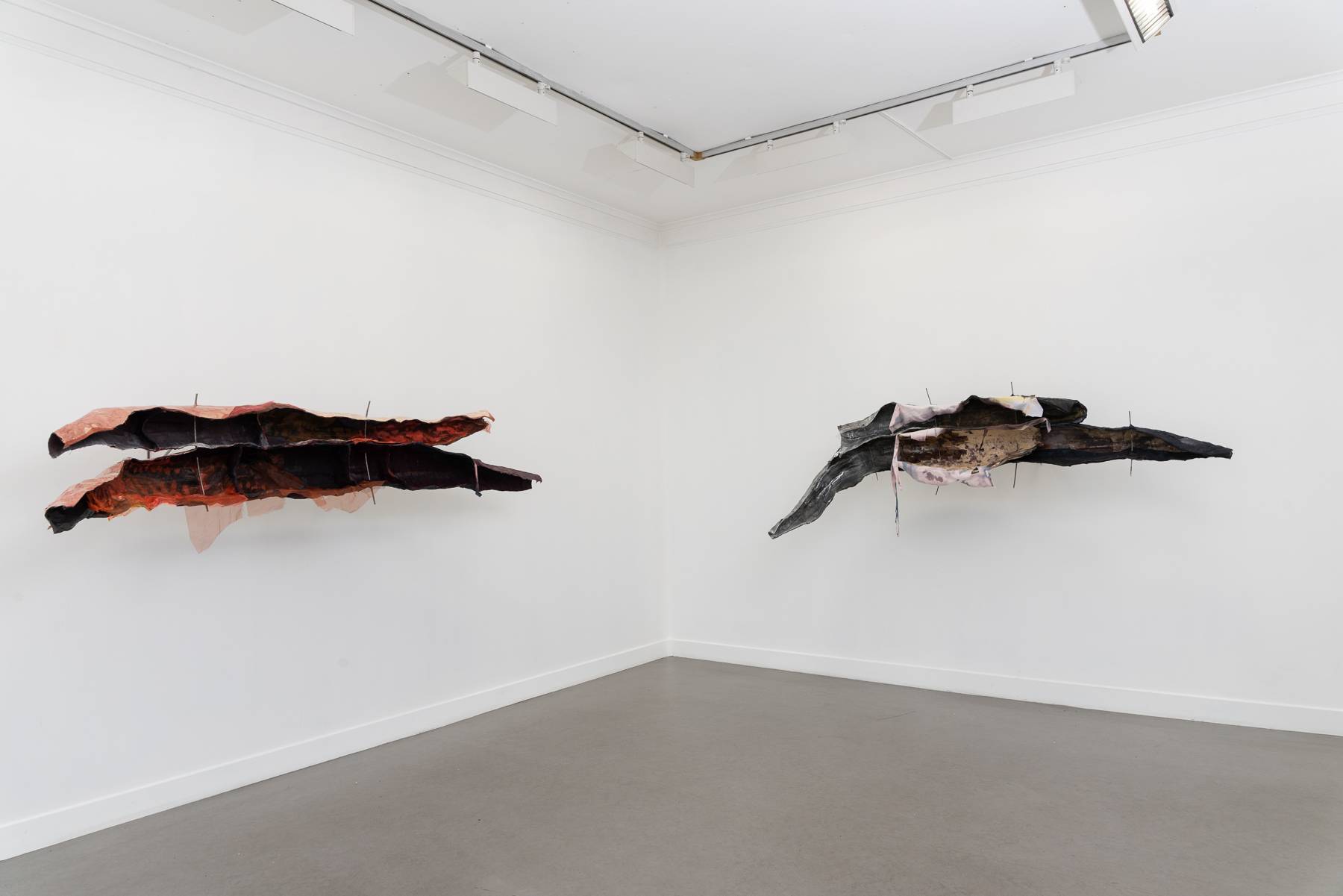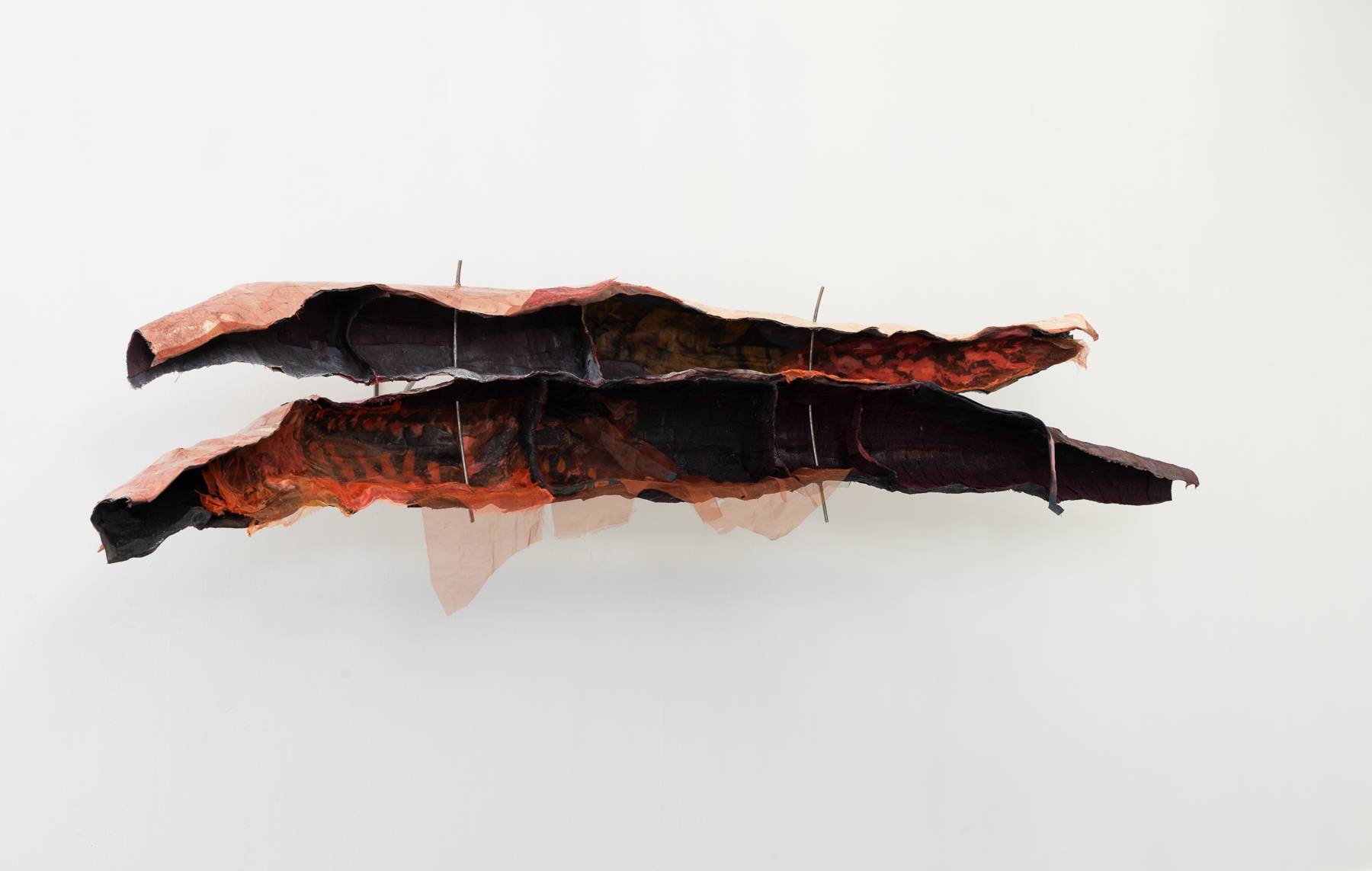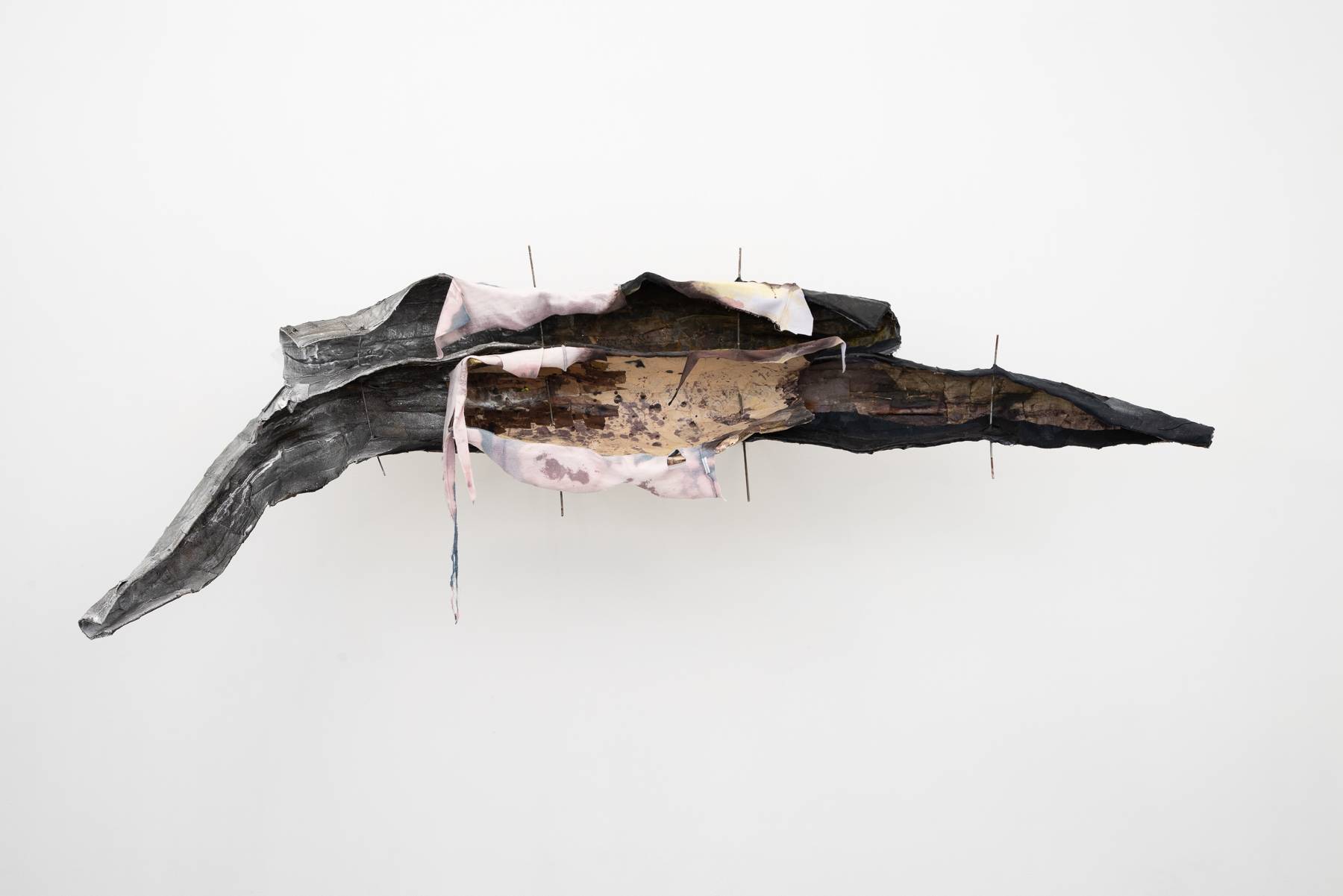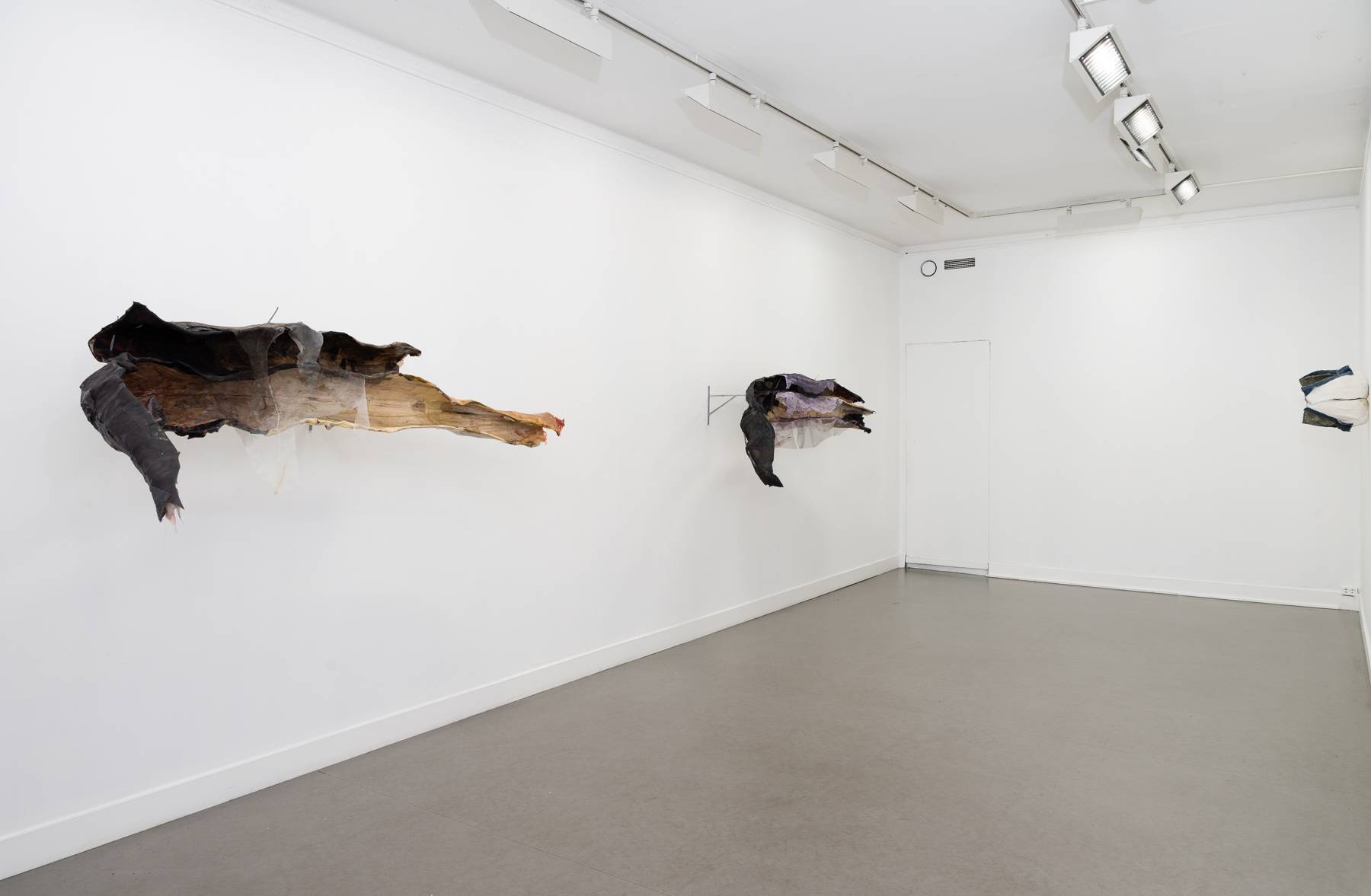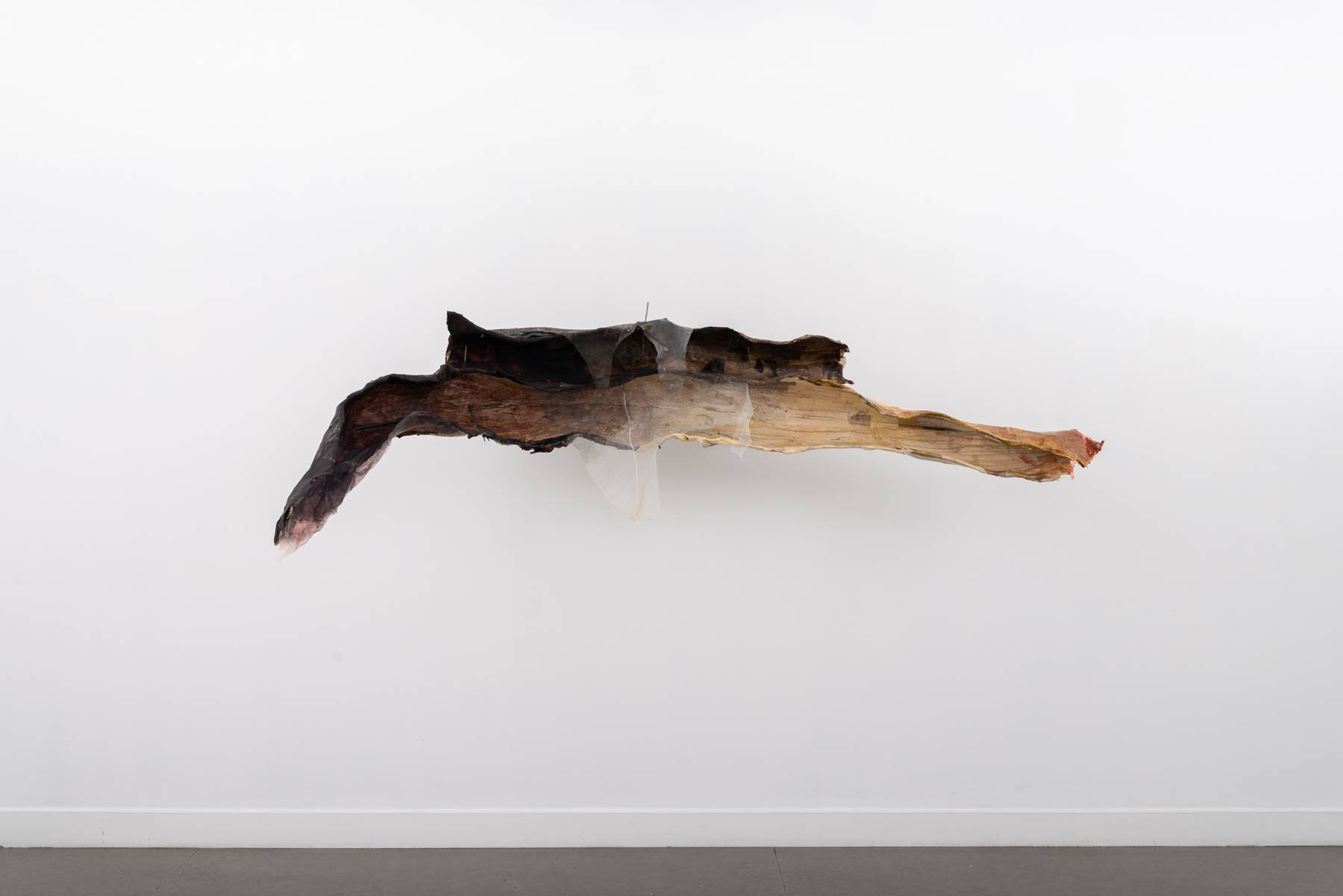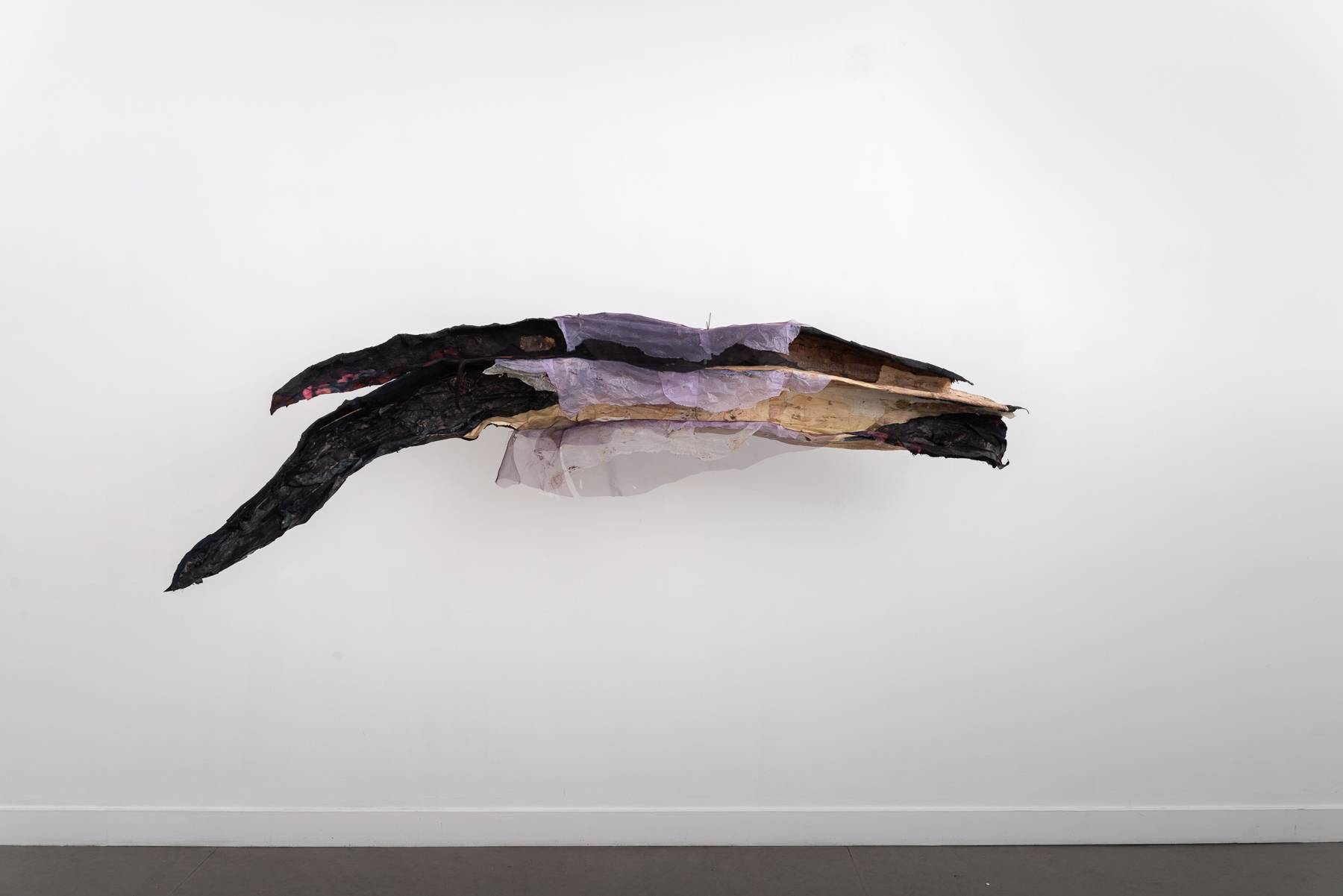Cato Løland
Tandem
The Window Room and the Cabinet
07.08.—07.09.2025
1. What kind of information exists in the outer layers of things? In a threadbare terry towel, in salt efflorescence on a brick wall, in yellowed lacquer, in charred bark. What happens when the gaze touches the outermost layers—what emerges in that moment?
2. In his exhibition at Kunstnerforbundet, Cato Løland presents a new series of wall-mounted sculptures with skeletons made of rebar and wire mesh, occasionally visible beneath the materials that cover them. They resemble oversized seed pods, sliced lengthwise to reveal their insides. One might think there’s a desire to reveal here—but that impulse is interrupted by a need to conceal. Pieces of fabric hang like veils or ragged strips over the forms. The curved shapes leave the interiors of the sculptures partially in shadow. “There’s nothing inside the pods,” one might say—at least no pearl-shaped fruits waiting to be discovered. So instead, the gaze is directed to the shell, the container: to what it consists of, and what it still manages to hold.
3. In the early years of his studies, Cato focused on photography. He no longer works with that medium, but he still sends me pictures—odd everyday scenes that catch his attention and inspire him. Two ventilation ducts hanging out of an open window like parallel intestines. A half-demolished building revealing not furniture or objects, but the materials beneath the cladding—insulation and sheeting hanging in tatters from the floors. Through his gaze, he builds an archive of surfaces and forms. Sunlight glinting off seawater flowing into a rock crevice becomes a temporary relief. A trampled patch of earth at the edge of a forest, footprints filled with murky puddles—a study in wet black.
4. One might think of the sculptures as reconstructions of fleeting compositions like these—where certain structures and phenomena recur: light play, darkness. Covers, clothing. Traces. Water. Openings, vessels, veins.
5. Or to start elsewhere: Cato works with deconstructed materials. The metal skeletons of the large sculptures are clad with fragments of textile, paper, plastic, and foil. Layer upon layer. If you get close and look carefully, you might spot the once-soft, now paint-stiffened inside of a sweatshirt. And denim, nylon like that used for jewelry pouches, paper stiffened with glue, the still-visible ribbed pattern from a knitted garment. He collects materials, often from old clothes. From this perspective, you could say the materials lead the way.
6. Some materials—plants, roadside straws, for instance—I know how they feel just by looking at them. I know how they behave, how tightly or loosely the seeds sit in their sockets, how easily they come loose if I press and pull with my fingers. I know how the stiff husk frays along the grain if I chew it; inside is a floury core. When I see Cato’s sculptures, for a moment I feel I know something similarly about them—but then it slips away.
7. The pod-like sculptures are doubled—an elongated form stacked atop another. The forms aren’t identical, but they are of the same kind. Bound together with rebar, they hang so close that they overlap in some places. They share infrastructure. The pair, the double, is a recurring element in Cato’s practice. Take the series Ventilere, shown at Kunstgarasjen in Bergen in summer 2024—it also consisted of doubled, elongated, shell-like forms. But those forms were convex, turned outward to face the viewer. Still, you could glimpse the internal layers of the sculptures through crescent-shaped holes in the surface. Now, at Kunstnerforbundet, it’s as if the works have turned their bellies toward us, exposing themselves even further.
8. Alongside the large sculptures at Kunstnerforbundet is a series of smaller works. One might imagine they resemble all kinds of hollow things: gaping mouths, fish carcasses, crab shells, caves. They’re made of denim—Cato has cut the pockets from jeans, freeing them from the garments. A pocket doesn’t just resemble a vessel—it is one. These jeans pockets, once pressed close to someone’s hips, once filled with rummaging fingers, have now become wall-mounted sculptures that seem to gaze back at us. Soaked in plaster, they’ve become bodies of their own.
Text by Cecilie Almberg Størkson
Translated to English by Kunstnerforbundet.
Cato Løland (b. 1982) lives and works in Bergen. He completed his master’s degree at the Bergen Academy of Art and Design in 2009. He has exhibited at Lundgren Gallery in Palma, Paris Internationale, Entrée in Bergen, the Textile Industry Museum in Salhus, Kunstgarasjen in Bergen, and SOFT gallery in Oslo. His work has also been shown in group exhibitions at institutions such as the Astrup Fearnley Museum, KODE Bergen, Carvalho Park in New York, and the international textile biennial Contextile in Portugal. His works are included in several public collections, including the National Museum of Norway, Astrup Fearnley Museum, KODE, Public Art Norway (KORO), and the University Museum of Bergen.
The exhibition is supported by the Norwegian Visual Artists Fund (BKV), Arts and Culture Norway, and the City of Bergen.
